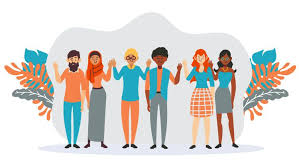
Embracing the Diversity of World Cultures: A Celebration of Global Heritage
The Rich Tapestry of Cultures Around the World
Cultures are the colorful threads that weave together the fabric of human society. They encompass a wide range of beliefs, traditions, customs, languages, arts, and social behaviors that define a group of people. From the vibrant festivals of India to the intricate tea ceremonies of Japan, cultures offer a glimpse into the diverse and fascinating ways in which people express their identities and values.
One of the most captivating aspects of cultures is their ability to evolve and adapt over time. As societies interact and exchange ideas through globalization and technology, cultural boundaries blur, leading to a rich tapestry of shared traditions and practices. This cultural exchange fosters understanding, empathy, and appreciation for the unique perspectives that different cultures bring to the global community.
Food is an integral part of culture, reflecting not only culinary preferences but also historical influences and social customs. Whether it’s the spicy flavors of Mexican cuisine or the delicate balance of flavors in French cooking, food serves as a gateway to understanding a culture’s values and beliefs.
Art forms another cornerstone of cultural expression, with each culture producing its own unique styles of music, dance, literature, and visual arts. From the rhythmic beats of African drumming to the graceful movements of ballet in Russia, art transcends language barriers to convey emotions and stories that resonate with people across different backgrounds.
Language plays a crucial role in preserving cultural heritage and fostering communication within communities. The nuances of language reflect a culture’s history, social structure, and worldview. By learning new languages, we gain insight into different cultures’ ways of thinking and expressing themselves.
Ultimately, cultures serve as bridges that connect individuals from diverse backgrounds while celebrating their differences. By embracing cultural diversity and promoting intercultural dialogue, we can build a more inclusive and harmonious global society where mutual respect and understanding thrive.
Exploring Cultural Diversity: Common Questions and Examples
- What is culture 5 examples?
- What are the 10 universal cultures?
- What are the 12 great cultures?
- What are lists of cultures?
- What are different cultures in society?
What is culture 5 examples?
Culture encompasses the beliefs, behaviors, traditions, and values shared by a group of people, shaping their way of life and identity. Five examples of cultural elements include language, cuisine, music, art, and rituals. Language serves as a cornerstone of culture, reflecting historical influences and social nuances. Cuisine showcases a culture’s unique flavors and culinary traditions passed down through generations. Music and art express emotions and stories that resonate with cultural heritage. Rituals, such as ceremonies or celebrations, symbolize important events and beliefs within a community. Together, these examples illustrate the diverse and intricate tapestry of human cultures worldwide.
What are the 10 universal cultures?
The concept of “universal cultures” refers to fundamental aspects of human societies that are commonly found across diverse cultures worldwide. While the specific list may vary depending on different perspectives, some widely recognized universal cultural elements include language, family structures, social norms, rituals and ceremonies, art forms, music, storytelling traditions, cuisine, beliefs in spirituality or religion, and systems of governance. These shared cultural elements serve as pillars that shape human interactions and identities across the globe, highlighting the interconnectedness of humanity despite our varied backgrounds and experiences.
What are the 12 great cultures?
The concept of “the 12 great cultures” is not a universally recognized or defined term in the study of cultures. Cultures are diverse and multifaceted, encompassing a wide range of traditions, beliefs, and practices that vary across regions and societies. Instead of focusing on a specific list of 12 cultures, it is more valuable to appreciate the richness and complexity of the countless cultures that exist around the world. Each culture contributes uniquely to the global tapestry of human civilization, offering insights into different ways of life, values, and perspectives that enrich our understanding of the world we live in.
What are lists of cultures?
Cultures are complex and multifaceted, encompassing a wide array of beliefs, traditions, customs, languages, arts, and social norms that define a group of people. While it is challenging to compile an exhaustive list of cultures due to the vast diversity and intricacies involved, some commonly recognized cultural groups include Western culture, Eastern culture, African culture, Latin American culture, Indigenous cultures, and more. Each of these broad categories contains numerous subcultures with their own unique practices and identities, highlighting the rich tapestry of human diversity that exists around the world.
What are different cultures in society?
Different cultures in society encompass a wide range of beliefs, traditions, customs, languages, and social norms that shape the way individuals interact and express themselves within a community. From the vibrant celebrations of festivals to the unique culinary practices and art forms, each culture brings its own distinct flavor to society. These cultural differences contribute to the rich tapestry of human experience, fostering diversity, understanding, and appreciation for the multifaceted ways in which people navigate their identities and relationships within a broader social context.


